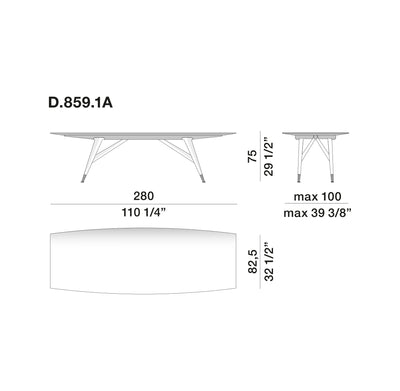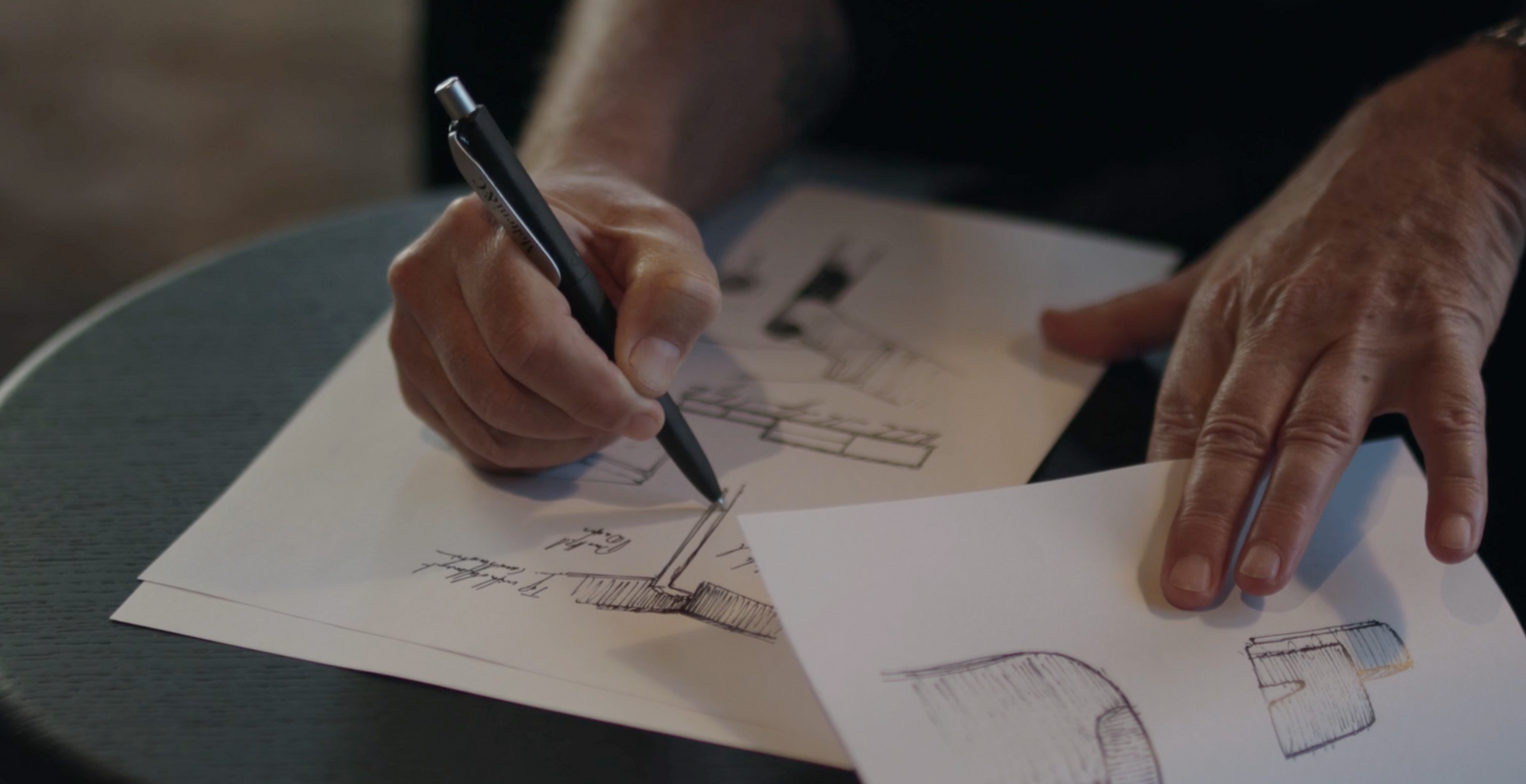
Giovanni “Gio” Ponti, (Milan, November 18, 1891 - Milan, September 16, 1979), is one of the Italian masters of architecture. He was also a designer and essayist and one of the most important of the twentieth century.
Other than the great architectural works which carry his unmistakable signature, he created a vast amount of work in the furniture sector. This is demonstrated in his three Milanese houses which were fully furnished in the "Ponti" style. The houses in via Randaccio, 1925, Casa Laporte in via Brin, 1926 and the last in via Dezza, in 1957 is an "expression" of his home design ideas. Gio Ponti was an Italian promoter of industrial design and introduced the idea of interior furnishing ranges produced as being a "sophisticated," economic, "democratic" and modern.
Molteni&C managed a reissuing project of furniture and furnishings designed by Gio Ponti for products for these private homes and limited editions. After a long journey of research, selection and study of prototypes, the collection was exhibited at the Salone del Mobile 2012. This was thanks to the cooperation and the exclusively signed agreement of the Ponti heirs and the artistic director of Cerri & Associati Studio.


Giovanni “Gio” Ponti, (Milan, November 18, 1891 - Milan, September 16, 1979), is one of the Italian masters of architecture. He was also a designer and essayist and one of the most important of the twentieth century.
Other than the great architectural works which carry his unmistakable signature, he created a vast amount of work in the furniture sector. This is demonstrated in his three Milanese houses which were fully furnished in the "Ponti" style. The houses in via Randaccio, 1925, Casa Laporte in via Brin, 1926 and the last in via Dezza, in 1957 is an "expression" of his home design ideas. Gio Ponti was an Italian promoter of industrial design and introduced the idea of interior furnishing ranges produced as being a "sophisticated," economic, "democratic" and modern.
Molteni&C managed a reissuing project of furniture and furnishings designed by Gio Ponti for products for these private homes and limited editions. After a long journey of research, selection and study of prototypes, the collection was exhibited at the Salone del Mobile 2012. This was thanks to the cooperation and the exclusively signed agreement of the Ponti heirs and the artistic director of Cerri & Associati Studio.

D.859.1 | Table
The D.859.1 table, designed primarily as a meeting table for up to ten people, stands out not only for its impressive size—over 3,60 meters long—but especially for its simple yet refined design.

The legs are notable for their fine-membered modernity, creating a trapezoidal single-span bridge upon which the large tapered top conveys the idea of aerodynamics. Originally made of solid ash with bronze ferrules, it is now also available in a darker-toned wood such as Black Stained Ash. Originally made of solid ash with bronze ferrules, it is now also available in a darker-toned wood such as Black Stained Ash. In addition to its original dimensions, the D.859.1 is available in two smaller version that faithfully reproduce the harmony and proportions of the original design.
“Four distinct themes are interwoven in this building: the synthesis of the arts; the interplay of magnitudes in the juxtaposition of a small, almost homey space with the colossal bulk of the skyscraper; the representational and communicative function of the architecture and design; and lastly, the bond with advertising and the capital.” Daniel Sherer, “Gio Ponti a New York”, in Espressioni Gio Ponti, catalogue for the exhibition at the Triennale di Milano, 2011.
Recently viewed

COMPLIMENTARY CONSULTATION

CUSTOM CONFIGURATION
MADE IN ITALY











